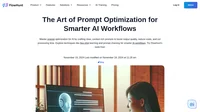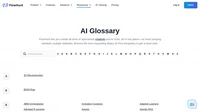A token in the context of large language models (LLMs) is a sequence of characters that the model converts into numeric representations for efficient processing. These tokens can be words, subwords, characters, or even punctuation marks, depending on the tokenization strategy employed.
Tokens are the basic units of text that LLMs, such as GPT-3 or ChatGPT, process to understand and generate language. The size and number of tokens can vary significantly depending on the language being used, which affects the performance and efficiency of LLMs. Understanding these variations is essential for optimizing model performance and ensuring fair and accurate language representation.
Tokenization
Tokenization is the process of breaking down text into smaller, manageable units called tokens. This is a critical step because it allows the model to handle and analyze text systematically. A tokenizer is an algorithm or function that performs this conversion, segmenting language into bits of data that the model can process.
Tokens in LLMs
Building Blocks of Text Processing
Tokens are the building blocks of text processing in LLMs. They enable the model to understand and generate language by providing a structured way to interpret text. For example, in the sentence “I like cats,” the model might tokenize this into individual words: [“I”, “like”, “cats”].
Efficiency in Processing
By converting text into tokens, LLMs can efficiently handle large volumes of data. This efficiency is crucial for tasks such as text generation, sentiment analysis, and more. Tokens allow the model to break down complex sentences into simpler components that it can analyze and manipulate.
Types of Tokens
Word Tokens
These are whole words used as tokens. For instance, the sentence “I like cats” would be tokenized into [“I”, “like”, “cats”].
Subword Tokens
These are parts of words used as tokens. This approach is beneficial for handling rare or complex words. For example, “unhappiness” might be tokenized into [“un”, “happiness”].
Character Tokens
These are individual characters used as tokens. This method is particularly useful for languages with rich morphology or for specialized applications.
Punctuation Tokens
These include punctuation marks as distinct tokens, such as [“!”, “.”, “?”].
Challenges and Considerations
Token Limits
LLMs have a maximum token capacity, which means there’s a limit to the number of tokens they can process at any given time. Managing this constraint is vital for optimizing the model’s performance and ensuring relevant information is processed.
Context Windows
A context window is defined by the number of tokens an LLM can consider when generating text. Larger context windows enable the model to “remember” more of the input prompt, leading to more coherent and contextually relevant outputs. However, expanding context windows introduces computational challenges.
Practical Applications
Natural Language Processing (NLP) Tasks
Tokens are essential for various NLP tasks such as text generation, sentiment analysis, translation, and more. By breaking down text into tokens, LLMs can perform these tasks more efficiently.
Retrieval Augmented Generation (RAG)
This innovative solution combines retrieval mechanisms with generation capabilities to handle large volumes of data within token limits effectively.
Multilingual processing
- Tokenization Length: Different languages can result in vastly different tokenization lengths. For example, tokenizing a sentence in English may produce significantly fewer tokens compared to the same sentence in Burmese.
- Language Inequality in NLP: Some languages, particularly those with complex scripts or less representation in training datasets, may require more tokens, leading to inefficiencies.
The Art of Prompt Optimization for Smarter AI Workflows
Master prompt optimization for AI with FlowHunt. Enhance output quality, reduce costs, and streamline workflows. Try a 14-day free trial!



